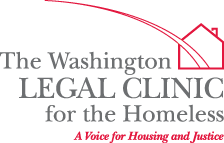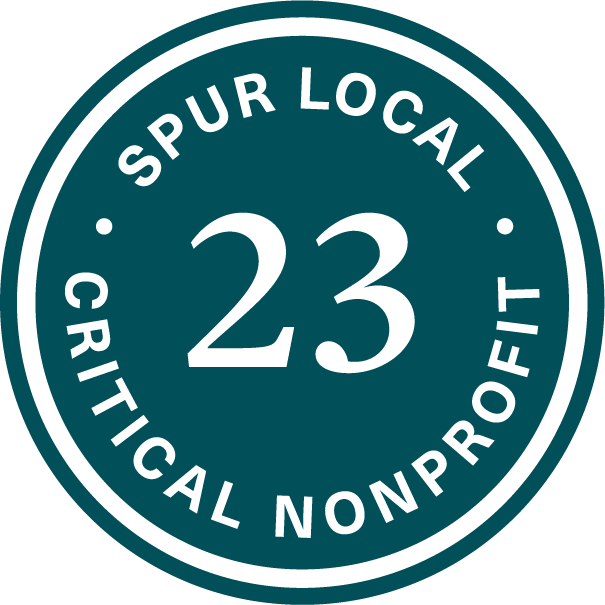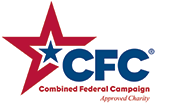From February to May of 2013, one local youth service provider turned away at least 150 unaccompanied minor children due to lack of emergency shelter space, many of whom also had children of their own. When made aware of this unmet need in September, the Interagency Council on Homelessness (ICH) responded by making the adoption of the Winter Plan contingent on the development of a plan to serve this population. But the draft plan that will be voted on by the ICH tomorrow (October 17th at 2PM) does not announce any new resources for youth that will change the status quo of turning away 150 youth in five months. Instead, the plan just lists the current resources available and suggests referrals to those resources.
The District seems to have concluded that it has no legal obligation to provide emergency shelter to youth when it is freezing outside, and thus it is not required to develop a plan that would serve every child in need this winter. The Department of Human Services reads the Homeless Services Reform Act to say that youth are not entitled to the right to shelter in freezing weather and that, even if they were, no unaccompanied youth could ever meet basic eligibility criteria. We disagree, and you can read our legal interpretation below.
Putting aside our differing legal interpretations of the Homeless Services Reform Act, we can imagine few scenarios that so egregiously defy the spirit of the law. According to Mayor’s Order 2001-161 (October 31, 2001), the purpose of the Winter Plan is “to identify vulnerable homeless people living in exposed, unprotected areas and provide immediate access to shelter and services… to save lives and prevent serious injury that can be caused by extended exposure to severe winter weather conditions.”
The proposed plan will formalize a process by which many homeless youth are left without any shelter whatsoever on hypothermic nights. Attempting to exclude unaccompanied youth from the law’s protections will increase not only legal liability, but the risk of real and irreparable harm to vulnerable children this winter.
Let the Chair of the Interagency Council on Homelessness, City Administrator Allen Lew, know that the proposed plan will not protect the lives of vulnerable youth. You can email him at allen.lew@dc.gov.
The District of Columbia is Legally Obligated to Provide Emergency Shelter to Homeless Youth in Severe Weather
Analysis by Washington Legal Clinic for the Homeless
I. Introduction
According to preliminary data from one local youth service provider, at least 150 minor children were turned away from shelter services from February to May of 2013 due to lack of space, many of whom also had children of their own. When made aware of this unmet need, the Interagency Council on Homelessness (ICH) responded by making adoption of the Winter Plan contingent on the development of a plan to serve this population. On October 3, 2013, a draft modification of the youth services section of the Winter Plan (“Winter Plan Addendum”) was circulated for consideration. The changes outlined in that modification were largely based on guidelines put forth in a document entitled “Proposed Framework for Serving Unaccompanied Minor Children” (“Proposed Framework”) which was released by the Department of Human Services (DHS) around September 12, 2013. Both of these documents are based on the premise that unaccompanied youth[1] do not have a right to shelter in severe weather pursuant to the Homeless Services Reform Act (HSRA), and therefore they propose a piecemeal approach to providing shelter to unaccompanied youth that is based primarily on referring youth to non-shelter services.
It is important to note at the outset that much of the analysis in the Proposed Framework is based on two faulty premises: 1) that federal law prevents the establishment of low-barrier emergency shelter for unaccompanied minors and 2) that the only relevant analysis is whether the Department of Human Services has a legal obligation to serve this population.
First, the federal Runaway and Homeless Youth Act specifically authorizes the establishment of emergency shelters for runaway youth, defined as someone under 18 who has “left home without permission of their parents or guardians[.]”[2] The explicit purpose of this federal program is to provide “an alternative to involving runaway and homeless youth in the law enforcement, child welfare, mental health, and juvenile justice systems.”[3] Not only is the establishment of such emergency shelter allowed under this act, but there are two providers who currently receive funding under this act in the District. Rather than conforming to federal law, the Winter Plan Addendum would actually run counter to the goals of the relevant federal laws dealing with unaccompanied youth unless it is changed to include the provision of emergency shelter for unaccompanied youth.
Second, the HSRA is clear that the obligation to provide severe weather shelter to all residents of the District of Columbia is that of the “District” or the “Mayor,” not any one specific agency.[4] While DHS has traditionally taken a lead role in implementing the District’s obligation to provide emergency shelter to homeless residents, the inquiry into whether unaccompanied youth have a right to severe weather shelter does not hinge on whether DHS as an agency is charged with serving that population.
As will be explained more fully below, it is our position that the HSRA does not exclude unaccompanied youth from its mandate to provide severe weather shelter and that the Winter Plan Addendum fails to effectuate that legal right sufficiently. Perhaps more fundamentally, the Winter Plan Addendum fails, for a significant portion for the homeless population, to comport with the spirit of the law perhaps best summed up by the Mayor’s Order 2001-161, dated October 31, 2001 (Purpose):
The Hypothermia Procedures shall establish a Winter Plan designed to identify vulnerable homeless people living in exposed, unprotected areas and provide immediate access to shelter and services. The overall goal of this emergency plan shall be to save lives and prevent serious injury that can be caused by extended exposure to severe winter weather conditions.
II. Unaccompanied Youth have a Legal Right to Shelter in Severe Weather
Contrary to the guidelines laid out in both the Winter Plan Addendum and the Proposed Framework, the HSRA does not exclude unaccompanied youth from its mandate that the District provide emergency shelter in severe weather. When the temperature, including wind chill, drops below 32 degrees Fahrenheit, the HSRA provides a right to shelter to “any resident of the District who is homeless and cannot access other housing arrangements.”[5] The Winter Plan Addendum seems to implicitly deny that this right extends to unaccompanied youth, while the Proposed Framework does so explicitly. This policy seems to be based largely on a misinterpretation of three terms in the HSRA: “individual,” “resident,” and “homeless.”
A. Unaccompanied Youth are “Individuals” or “Families” under the HSRA, depending on whether they have minor or dependent children with them.
The Proposed Framework concludes that unaccompanied youth are neither “individuals” nor “families” and thus are excluded by the HSRA’s right to shelter in severe weather. DHS suggests that since the term “individual” is not defined in the HSRA, the controlling definition should be that of the implementing regulations promulgated by DHS. Although no citation is provided, the term “individual” is said to be qualified in those regulations as “individual adult,” and therefore the HSRA term would similarly exclude minor children.[6]
Besides contorting the generally accepted meaning of the word “individual” and the plain language of the HSRA, this approach is flawed for several reasons. First, since the HSRA provides a definition for the term “adult,” [7] the drafters could have easily excluded minor children from certain rights under the HSRA by using the term “adult” rather than “individual.” As the drafters used the term “individual” in reference to the right to shelter, the term seems to indicate a broader group of persons than just adults. Second, the HSRA defines a family as “a group of individuals with at least one minor or dependent child.”[8] If “individuals” only included adults, this definition would require two adults (“a group”) in addition to one minor child in order to qualify as a family. Under this standard, a single mother with a child would not qualify as a family. Given that such a result would run counter to the clear intentions and operation of the HSRA, the more logical interpretation would be that a family can be composed of two “individuals,” at least one of whom is a minor. (Similarly, there appears to be nothing in the HSRA prohibiting minor parents with minor children from qualifying as a family for purposes of accessing shelter services.)
Finally, the regulations DHS refers to do not in fact contain any definition of the term “individual”. There are sections in these regulations that describe the intake and assessment process for “individual adults”, but this simply reflects the reality that we have a separate system for individual adults.[9] This is not a sufficient basis for concluding that it was the intent of the Council in enacting the Homeless Services Reform Act to exclude individuals under age 18 from protection from hypothermic weather. Further, given that DHS claims to have no authority to serve this population in the first place, even if DHS promulgated regulations that defined out this population, the regulations would be merely reflective of its practice and irrelevant to statutory interpretation.
B. Unaccompanied Youth Can Meet the Residency Requirement of the HSRA
The Proposed Framework concludes that, even if unaccompanied youth were included in the HSRA’s promise of shelter in severe weather, they would not be considered eligible because they could not establish District residency. It is true that, in general, only District residents are eligible for homeless services under the HSRA.[10] But there is no reason why unaccompanied youth would, categorically, be unable to meet this eligibility criterion.
The Proposed Framework does not provide a citation for its statement that a minor who is not legally emancipated cannot establish residency independently of his or her parents. This omission is not surprising given that the DC Code indicates the opposite. The HSRA states that residency determinations will be made in accordance with DC Code § 4-205.03, which in turn states that “[a] child is residing in the District if he or she is making his or her home in the District.”[11] This definition does not limit the residency of a child to that of his or her parents. This same statutory provision is used to determine eligibility for another DHS benefits program, TANF, which allows minors to receive benefits even if they are not living with a parent or guardian in certain circumstances.[12] Given that the TANF program allows minors to independently receive services as District residents under some circumstances, the same should be true for minors seeking homeless services under the HSRA.
Furthermore, DC law has a variety of instances where minors who are not legally emancipated are permitted significant latitude in their affairs. For example, minors can access services like TANF[13] and WIC[14] for themselves and their children if they are parents and they meet certain requirements.[15] In addition, minors 15 years of age or older may contract for life, health, and accident insurance;[16] minors can consent to medical services for pregnancy, pregnancy termination, and substance abuse;[17] and minors can consent to mental health treatment and medication without a parent’s involvement.[18] If minors are able to independently conduct their lives in these key areas, it seems reasonable that they should also be permitted to receive emergency services under the HSRA.
Even if some minor children faced challenges in establishing District residency independently of their parents, they could still be eligible for hypothermia shelter. The HSRA states that “severe weather shelters operating as low-barrier shelters shall not be required to receive demonstration of residency or prioritize District residents.”[19]Moreover, the HSRA provides that “[n]o individual or family may be deemed ineligible for services solely because the individual or family cannot establish proof of homelessness or residency at the time of the individual or family’s application for assistance.”[20] Finally, the HSRA explicitly permits the provision of life-saving hypothermia shelter to non-residents so long as District residents receive priority.[21]Together these provisions demonstrate that lack of residency or proof of residency will not necessarily disqualify unaccompanied youth from accessing emergency shelter on hypothermic nights.
C. Unaccompanied Minors Can Meet the HSRA Definition of “Homeless”
The Winter Plan Addendum and the Proposed Framework both assert that minors who have left their homes but could conceivably be allowed to return at some point are not homeless under the HSRA and therefore have no right to shelter. These assertions are based on a troubling interpretation of the term “homeless” and would result in many unaccompanied youth being left without shelter on hypothermic nights. Because the HSRA defines someone as homeless if they are “lacking a fixed, regular residence that provides safe housing,” we believe that many unaccompanied youth would qualify as “homeless” and would therefore be eligible for services under the HSRA.[22]
While neither the Winter Plan Addendum nor the Proposed Framework provide a basis for their conclusion that children in these situations are not homeless, they are presumably premised on the idea that these children have “safe housing” that is available to them. This reasoning is deeply flawed. Perhaps the most glaring flaw is seen in one situation described in the Proposed Framework in which a minor would not be considered homeless who “has a house to return to but has no place to stay for the nightor until transportation can be arranged” (emphasis added). There is no durational requirement to be considered homeless under the HSRA. The purpose of the right to severe weather shelter is to prevent someone from freezing to death during the particular night when the person has “no place to stay.”
III. Conclusion
As with the federal scheme outlined in the Runaway and Homeless Youth Act, the District’s goal should be to get youth into safe and stable environments so that appropriate assessments can be performed and a response developed. The proposed Winter Plan Addendum may deter youth from accessing safety and appears to be contrary to both federal and District law. Most troubling of all, the proposed system will formalize a process by which many homeless youth will be left without any shelter whatsoever on hypothermic nights. If there is no suspicion of abuse or neglect, these youth will not be eligible for shelter through CFSA, leaving only the services that are currently available to homeless youth: the same providers that were forced to turn away over 150 minor children in five months due to lack of capacity. The inevitable outcome will be that minor children will be left outside during hypothermic nights.
As the purpose of the statutory right to shelter in severe weather and the Winter Plan is to prevent the loss of life or limb for any person experiencing homelessness when it is freezing outside, attempting to exclude unaccompanied youth from the law’s protections is likely to lead to legal liability for the District as well as tragedy for a vulnerable child.
[1] For purposes of this analysis, the terms “unaccompanied youth” and “minor children” are used interchangeably and include all individuals below the age of eighteen who are not accompanied by a caregiver, parent or guardian, although they may have children of their own.
[2] 42 USC § 5712(a).
[3] 42 USC § 5711(a)(2)(A.)
[4] See e.g. DC Code §§ 4-753.01 (c)(1) (“the District shall make available appropriate space…”); (2) (“the District shall not…”); (3)(B) (“the Mayor may…”).
[5] DC Code § 4-753.01 (c)(1). See also DC Code §§ 4-754.11(5), 4-751.01(21).
[6]The Winter Plan Addendum and Proposed Framework both state that only emancipated youth are eligible for services as “adults.” DC, however, does not have a statutory emancipation provision, and we have found no cases where minors have sued for emancipation by judicial decree in the District. Given that the only mention of emancipated minors in the HSRA includes the qualifying phrase “under District law,” it is unlikely that there would be any emancipated minors eligible for services under the Winter Plan Addendum.
[7] DC Code § 4-751.01(2).
[8] DC Code § 4-751.01(16).
[9] 29 DCMR §§ 2502 – 2606.
[10] See DC Code § 4-753.02(a)(2). However, as is discussed below, this requirement is waived for some severe weather shelters.
[11] DC Code § 4-751.01(32). The residency definition includes additional provisions (i.e. regarding receipt of public benefits) that are not relevant to this analysis.
[12] DC Code § 4-205.63(b).
[13] DC Code § 4-205.18(d)(1).
[14] 42 USC § 1786.
[15] See DC Code § 4-205.63(b).
[16] DC Code § 31-4330.
[17] 22-B DCMR 600
[18] DC Code § 7-1231.14.
[19] DC Code § 4-753.02(a)(2).
[20] DC Code § 4-753.02(b).
[21] DC Code § 4-753.01(c)(1).
[22] DC Code § 4-751.01(18).





